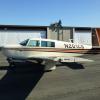Search the Community
Showing results for tags 'pipe'.
-
High-definition inspection cameras are becoming an essential tool in the industrial inspection world. Combining the capabilities of video inspection endoscope cameras, industrial inspection tools, and pipeline inspection equipment, these high-resolution devices provide exceptional clarity through wireless imaging and powerful LED lighting. This article explores the benefits of high-definition inspection cameras and their importance in a variety of industrial applications. Table of contents Main features of HD inspection cameras Applications: From industrial equipment to pipeline inspection Core advantages of high-definition inspection cameras How to choose the right HD inspection camera Conclusion: The Future of Nondestructive Testing The main features of HD inspection cameras High Definition Inspection Cameras offer a wide range of powerful features tailored for industrial use. These cameras combine the functionality of a video inspection endoscope and provide the following key features: High-resolution video: Capture detailed HD footage that clearly shows the tiniest defects. LED Lighting: Adjustable LED lights provide clear visibility even in low-light environments. Wireless imaging: Allows users to view inspection results in real-time on mobile devices, improving operational efficiency. Remote Viewing: The long, flexible probe allows users to easily inspect hard-to-reach areas without disassembling the device. Applications: From industrial equipment to pipeline inspection High-definition inspection cameras have a wide range of applications in various fields, including but not limited to: 1. Industrial testing Regular inspections of industrial machinery are essential. High-definition inspection cameras allow users to identify wear, corrosion or cracks within equipment, enabling preventative maintenance and reducing downtime. 2. Pipeline inspection Video inspection borescope cameras are indispensable tools in pipeline inspections . Their flexible probes and high-resolution imaging capabilities allow for a thorough inspection of the inside of the pipeline to reveal blockages, cracks, and other potential problems. 3. Aviation and automotive industries In the aviation and automotive sectors, endoscopes and high-definition inspection cameras ( borescopes ) are used to inspect the internal structure of engines and mechanical components to ensure the safety and proper operation of the equipment. 4. Nondestructive Testing (NDT) High-definition inspection cameras are ideal for non-destructive testing, allowing detailed internal inspections without disassembling equipment. This method saves time and costs, so it is widely used in the construction, manufacturing and maintenance fields. Core advantages of high-definition inspection cameras There are several key advantages to using a high-definition inspection camera: benefit describe High-resolution imaging Detects tiny defects and helps users identify potential problems. Flexible probe design Supports probes of various lengths and diameters, suitable for complex environments. Wireless connectivity Real-time viewing on mobile devices enhances ease of use. Enhanced LED lighting Ensure clear images even in dark environments. Portable and efficient Small and portable, it is perfect for on-site inspections and quick assessments. How to choose the right HD inspection camera When choosing an HD inspection camera, consider these key factors: Resolution and image quality: Cameras with higher resolution can capture clearer images, which is critical for identifying tiny defects. Camera Diameter and Probe Length: Choose the appropriate probe length and diameter based on the application. For example, pipeline inspections typically require a longer probe, while engine inspections may require a thinner probe. Wireless connectivity: Make sure the device supports wireless imaging, allowing users to view and control the camera through a smart device. Adjustable LED Lighting: The camera with adjustable LED lights can adapt to various lighting conditions, ensuring clear visibility in any environment. Waterproof and heat-resistant: When using in humid or hot environments, choose a device with waterproof and heat-resistant features. Conclusion: The Future of Nondestructive Testing As technology continues to advance, high-definition inspection cameras will continue to play an important role in industrial and technical inspection. As artificial intelligence (AI) and augmented reality (AR) are incorporated into these devices, they will provide enhanced analytical capabilities and automated inspection functions, further improving inspection efficiency and accuracy. High-definition inspection cameras are the ideal tool for modern industrial inspection, providing precise, non-destructive assessments in a variety of applications. Whether it is video inspection endoscopes, pipeline inspections, or aircraft engine inspections, these cameras provide clear, reliable imaging, helping users "see the invisible" and enabling significant advances in industrial diagnostics.
-
- boresco
- borescope camera
-
(and 7 more)
Tagged with:
-
This is probably already on here someplace so it probably belongs in an FAQ section but... If I had the money and were to buy Mooney, I'd start making new 201's and 252's with the following changes: 1. Use the 2900 lb. gross weight frame. 2. Make the one piece belly pan standard with as many antennas as possible buried inside. 3. Include light weight starters and alternators. 4. Electronic Ignition standard. 5. Include the Powerflow exhaust as standard. 6. No vacuum system. 7. Cies floats standard connected to owner choice of either JPI or EI primary engine monitors. 8. Owner choice of displays/avionics/AP with options from Avidyne, Dynon, Garmin, Trig, and TruTrak. 9. AV-20S as a clock. 10. AV-30 to replace the TC. Time for me to wake up now.


